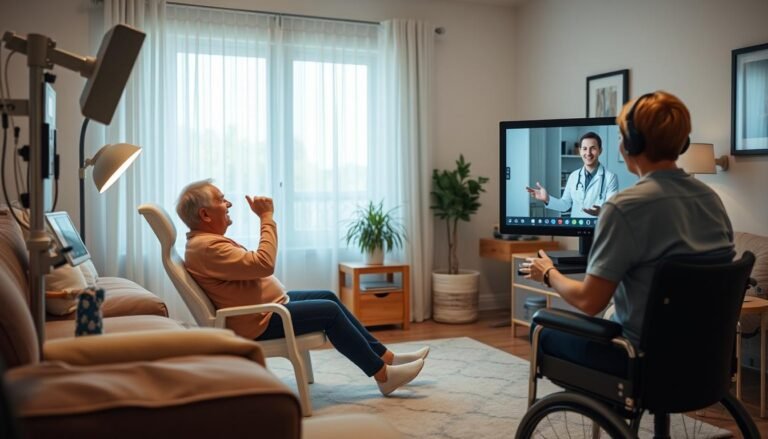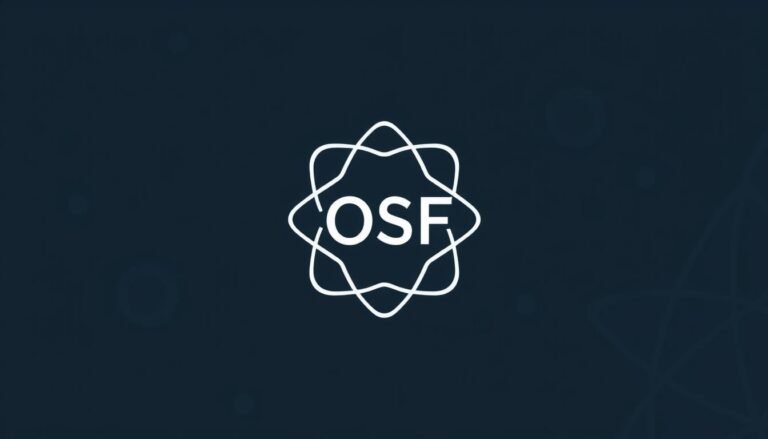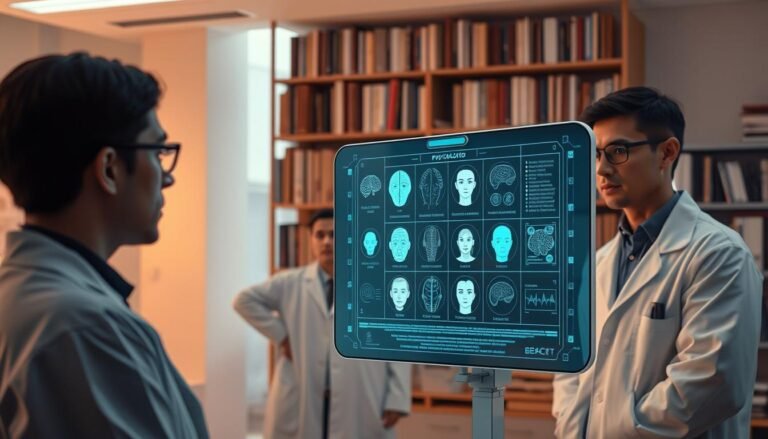
Introduction
In an increasingly complex world, the ability to adapt and thrive in the workforce is more critical than ever. Vocational rehabilitation stands out as a beacon of hope for individuals facing disabilities, injuries, or significant life challenges. Empowering Lives: The Transformative Power of Vocational Rehabilitation emphasizes the essential role that vocational rehabilitation plays in enabling individuals to reclaim their independence, enhance their skills, and find meaningful employment. In this article, we will explore the intricacies of vocational rehabilitation, its impact on lives, and real-world examples that illustrate its effectiveness.
Understanding Vocational Rehabilitation
What is Vocational Rehabilitation?
Vocational rehabilitation (VR) is a systematic process designed to help individuals with disabilities or other barriers to employment gain the skills necessary to obtain and maintain work. This process typically encompasses assessment, training, counseling, job placement, and ongoing support. The primary objective is to empower lives by facilitating a smooth transition into the workforce, thus enriching the individual’s quality of life.
The Importance of Vocational Rehabilitation
The need for vocational rehabilitation cannot be overstated. According to the U.S. Department of Labor, nearly 20% of Americans live with a disability. For many, traditional job search methods fail, exacerbating feelings of isolation and frustration. Empowering Lives: The Transformative Power of Vocational Rehabilitation provides a pathway out of this cycle, offering tailored support that meets the unique needs of each individual.
The Process of Vocational Rehabilitation
Assessment
The first step in vocational rehabilitation is a comprehensive assessment. This typically involves evaluating an individual’s skills, interests, and challenges. The objective is to create a personalized rehabilitation plan. Skilled professionals conduct interviews and standardized tests to gather information, providing a foundation for the next steps.
Training and Skill Development
Once the assessment is complete, the focus shifts to training. This phase may involve:
- Job Skills Training: Targeted instruction to develop abilities directly related to specific job functions.
- Soft Skills Development: Training in communication, teamwork, and workplace etiquette.
- Education: Providing opportunities for further education or certifications that enhance employability.
Job Placement
The job placement phase is where theory becomes practice. Rehabilitation counselors work closely with both the individual and potential employers to identify suitable job openings. This process can involve:
- Networking: Building connections in the industry.
- Job Fairs: Organizing events where employers and job seekers can meet.
- Internships: Facilitating temporary positions that allow individuals to gain experience.
Ongoing Support
The journey does not end with job placement. Ongoing support, including check-ins and additional training, is crucial for long-term success. This ensures that individuals adapt well to their new roles, fostering confidence and competence.
Real-World Applications: Case Studies
Case Study 1: John’s Journey to Employment
John, a 35-year-old man with a spinal cord injury, faced substantial hurdles in his quest for employment. With the help of a vocational rehabilitation program, John underwent a thorough assessment that highlighted his strengths in technology. Tailored training in computer programming followed, culminating in a successful placement with a tech start-up. John’s transformation not only improved his financial situation but also restored his sense of purpose.
Analysis: John’s case exemplifies how vocational rehabilitation can empower individuals by aligning their capabilities with job demands, ultimately facilitating a meaningful career journey.
Case Study 2: Sarah’s Path to Independence
Sarah, a single mother with a visual impairment, struggled with finding stable employment. Through a local vocational rehabilitation program, she received specialized training in customer service and adaptive technologies. Following her training, she secured a position with a retail chain that offered accommodations for her needs. Today, Sarah manages her career while balancing her responsibilities as a mother.
Analysis: Sarah’s story illustrates the significance of tailored resources and employer partnerships in fostering inclusive workplaces. Vocational rehabilitation can pave the way for individuals to achieve independence and career success despite challenges.
Case Study 3: Mark’s Return to Work After Injury
After a workplace accident left Mark with severe injuries, he felt hopeless about returning to his previous role in construction. With the guidance of a vocational rehabilitation counselor, Mark explored alternative job pathways. He underwent skills training in logistics and secured a role as a warehouse manager, utilizing his previous experience while adapting to his new physical capabilities.
Analysis: Mark’s experience highlights the flexibility of vocational rehabilitation. It demonstrates that even after significant setbacks, finding new career paths is possible, reinforcing the transformative power of vocational rehabilitation in empowering lives.
The Impact of Vocational Rehabilitation on Communities
Economic Benefits
Vocational rehabilitation not only benefits individuals but also communities. By integrating people with disabilities into the workforce, communities can enhance their economic vitality. A skilled, diverse workforce attracts businesses and fosters innovation, ultimately leading to economic growth.
Social Inclusion
When individuals succeed in finding meaningful employment through vocational rehabilitation, it sends a powerful message about inclusivity. Empowering Lives: The Transformative Power of Vocational Rehabilitation underscores not only the individual gains but also the societal transformation. Increased representation of diverse abilities in the workforce challenges stereotypes and promotes acceptance.
Reducing Dependency
Moreover, vocational rehabilitation contributes to reducing dependency on government assistance programs. By helping individuals achieve employment, communities can alleviate some of the financial burdens associated with disability support.
Challenges in Vocational Rehabilitation
Access to Services
One major challenge is access to vocational rehabilitation services. Rural areas may lack sufficient resources or trained professionals, creating disparities in opportunities.
Stigma
Despite advances in understanding disabilities, stigma often persists. Misconceptions surrounding the capabilities of individuals with disabilities can hinder employers from hiring qualified candidates.
Funding
Sustained funding is essential for the operation and expansion of vocational rehabilitation programs. Fluctuations in government budgets and prioritization of support can directly impact the services available.
Empowering Lives Through Advocacy
Enhancing Awareness
Addressing the challenges in vocational rehabilitation begins with advocacy. Raising awareness about the benefits and successes of these programs can inspire policy changes and increased funding.
Building Partnerships
Partnerships among businesses, vocational rehabilitation providers, and community organizations foster a holistic approach to empowerment. Collaboration can lead to innovative solutions that bridge the gap between training and employment.
Encouraging Inclusive Practices
Encouraging businesses to adopt inclusive practices not only benefits employers through diversified talents but also enhances workplace culture, making it more conducive to innovation and creativity.
Conclusion
Empowering Lives: The Transformative Power of Vocational Rehabilitation highlights the profound impact vocational rehabilitation has on individuals and society as a whole. By providing tailored support, facilitating skill development, and promoting inclusivity, vocational rehabilitation transforms not just lives but communities.
As we move forward, let us recognize the importance of advocating for robust vocational rehabilitation programs and championing the cause of inclusivity in the workplace. Every person has the potential to contribute meaningfully to society, and with the right support, those with barriers can not only work but thrive.
FAQs
1. What is the primary goal of vocational rehabilitation?
The main goal of vocational rehabilitation is to help individuals with disabilities or other barriers find and maintain meaningful employment, thereby enhancing their quality of life and independence.
2. Who typically qualifies for vocational rehabilitation services?
Individuals with physical, mental, or learning disabilities who face challenges in gaining or maintaining employment may qualify for vocational rehabilitation services. Eligibility criteria can vary by state or program.
3. What kind of support do vocational rehabilitation programs offer?
Vocational rehabilitation programs offer a wide range of services, including assessment, job training, skill development, career counseling, job placement, and ongoing support.
4. Is vocational rehabilitation only for individuals with physical disabilities?
No, vocational rehabilitation is designed for individuals with a wide range of disabilities, including mental health conditions and learning disabilities. The focus is on empowering all individuals facing barriers to employment.
5. How can employers benefit from hiring individuals through vocational rehabilitation programs?
Employers benefit from a diverse workforce, increased innovation, and potential tax incentives. Hiring individuals with rehabilitation support can lead to strengthened workplace culture and employee loyalty.
By embracing the transformative power of vocational rehabilitation, we can create a more inclusive society that empowers individuals and enriches communities.

















